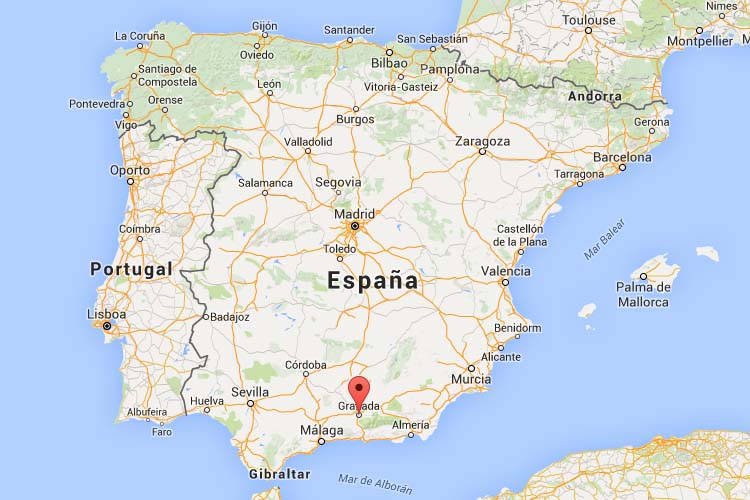The first coins of this area were coined in Iliberri at the end of the 3rd century BC, a city that was located on the land occupied by the current Albaicín neighborhood. In the Visigothic times, coinage was resumed, from the reign of Recaredo I to that of Witiza (586-702). After the seizure of Granada in 1492, it was considered to establish a mint in the city. Probably motivated by the need to mint coins to face the payments and the desire to show the incorporation of the Kingdom of Granada to the Castilian Crown.
The granting of offices for the Mint of Granada on 20, 21 and 23 February 1492, show that its establishment would take place before that date. From that moment on, there were seven official House of the Mint. But it was not until 1497, coinciding with the Pragmatic of Medina del Campo, that the Mint became fully operational.
The Mint was placed in a building known as the Maristan, built by Mohamed V between 1365 and 1367. It had been a hospital for the mentally ill; it had a large elongated courtyard with two floors of galleries on pillars and, also, on all four sides, elongated rooms. In the center of the courtyard there was a fountain with two lions pouring water over a pool.
The transformation of the building in the 15th century as the Mint entailed, among other remodelling, the creation of a room called the Treasury Room. It was on the upper floor, it had several closed rooms where the blanks, the minted coin, the standard weights and the scale were kept. On the lower floor were the furnaces, the minting room, the foundry and another room "where the coin is annealed and given colour", i.e. the annealing and cleaning facilities were the same.
The functioning of The House of the Mint corresponded to the rest of the existing mints, although the peculiarity of Granada, a Mudejar city, gave it a certainly particular character. The lack of Old Christians who knew the trade of coinage, as well as the use and continuity of a long experience are enough causes to justify that the trades of coin purse, and even some of the officers, were carried out by Moors. This situation was effective until 1512, year that by Royal Decree of 10 November provides that no new converted Moor or Jew can work as a minter or official of the Mint. This provision, although it maintains its legal character, did not have immediate practical application, since, in fact, the Moors continue to serve these offices, as recognized in a Royal Decree of 1541.
The Mint begins its mints in copper in values of blanca, 2 and 4 maravedis; in silver works on almost all the range of modules: 1/8, 1/4, 1/2, 1, 2 and 4; and in gold the medio excelente, excelente sencillo y el doble excelente. From 1600 onwards, the decline of silver and gold work began, with large quantities of copper and vellon coins minted instead. From 1661, the mint is mechanized with hydraulic wheels, emulating those that had the Segovia mint since 1585. They are in the part of the building overlooking the river and the remains of the Arab bridge.
The Granada mint also participated in the restriking of the copper coin during the reign of Philip IV. The last coin has the date 1685, this must have been the last time the House in Granada worked, although in 1688 the treasurer was authorized to work on silver and copper, which does not mean that he did. The mint was probably dismantled at the end of the 17th or beginning of the 18th century.
The Granada Mint
| Europe | |
| Spain | |
| Granada | |
| Granada | |
| <1000 | |
| 1685 |
Historical review
Actual state
The Maristan Nazari was located on the southern slope of the Albaicin hill, next to the Puerta de los Tableros or Bab al-Difaf, now known as Puente del Cadi, which closed the access to Granada along the Darro riverbed. After being the House of Mint, it became property of the barefoot Mercedarian friars of the Convent of Belen. In 1748 it was sold to Jose Marchante, who carried out important reforms to adapt the building for commercial use, installing wine warehouses and stables.
At the end of the 18th century or the beginning of the 19th century the building was converted into a neighbouring house, later it was used as a barracks and a prison. In 1843 the demolition of the building was authorized, although it could not be completed because there were parts of the construction shared with adjacent buildings on the south side. Partially demolished in 1984, it was demolished in 1997. The remains that are still preserved allow us to define the structure of Maristan as a rectangular building with four corridors arranged around a central courtyard, where a pool is located.
The Governing Council agreed on 26 March 2005 to declare the Maristan Nazari of Granada an Asset of Cultural Interest, with the category of Monument. This is one of only two buildings of this type that are preserved from the old Al-Andalus (the other is the Hospital de los Moriscos in Granada).
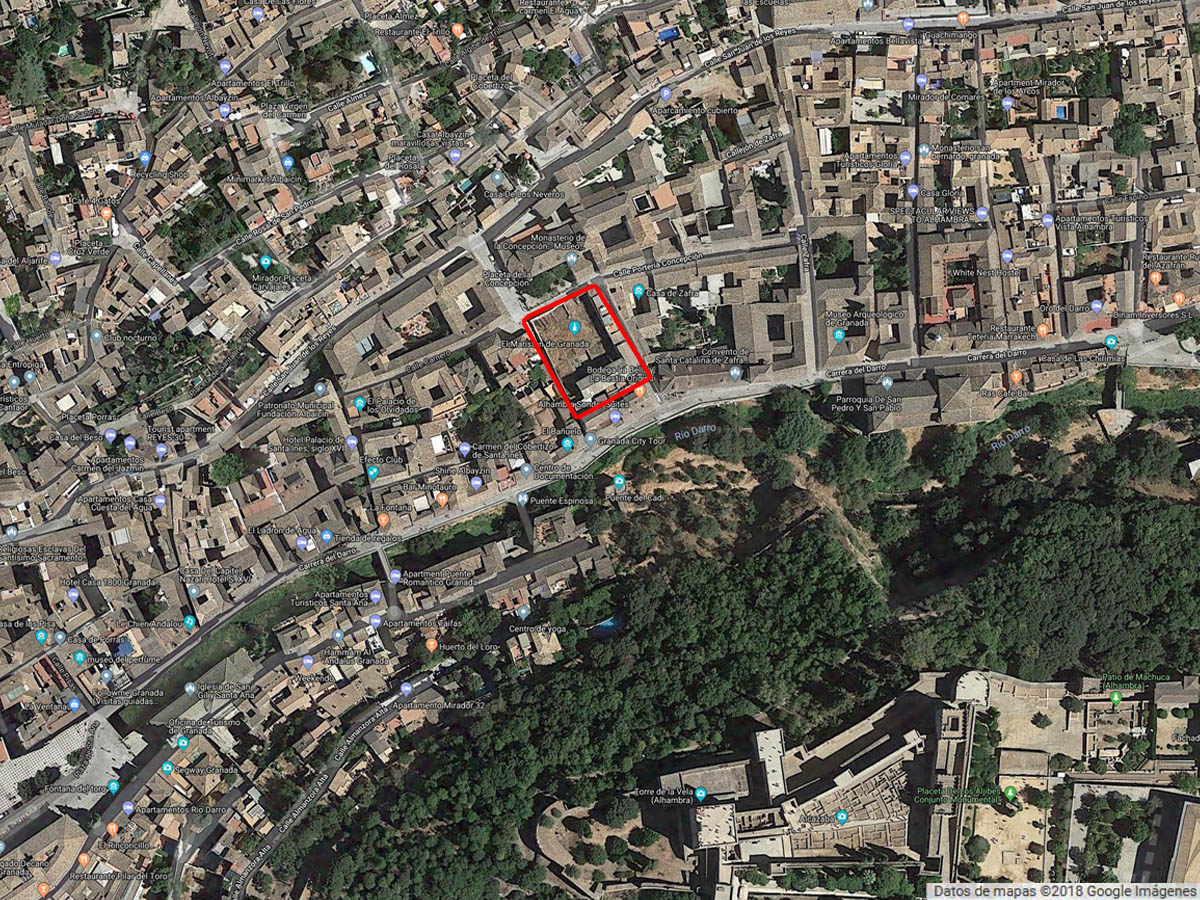
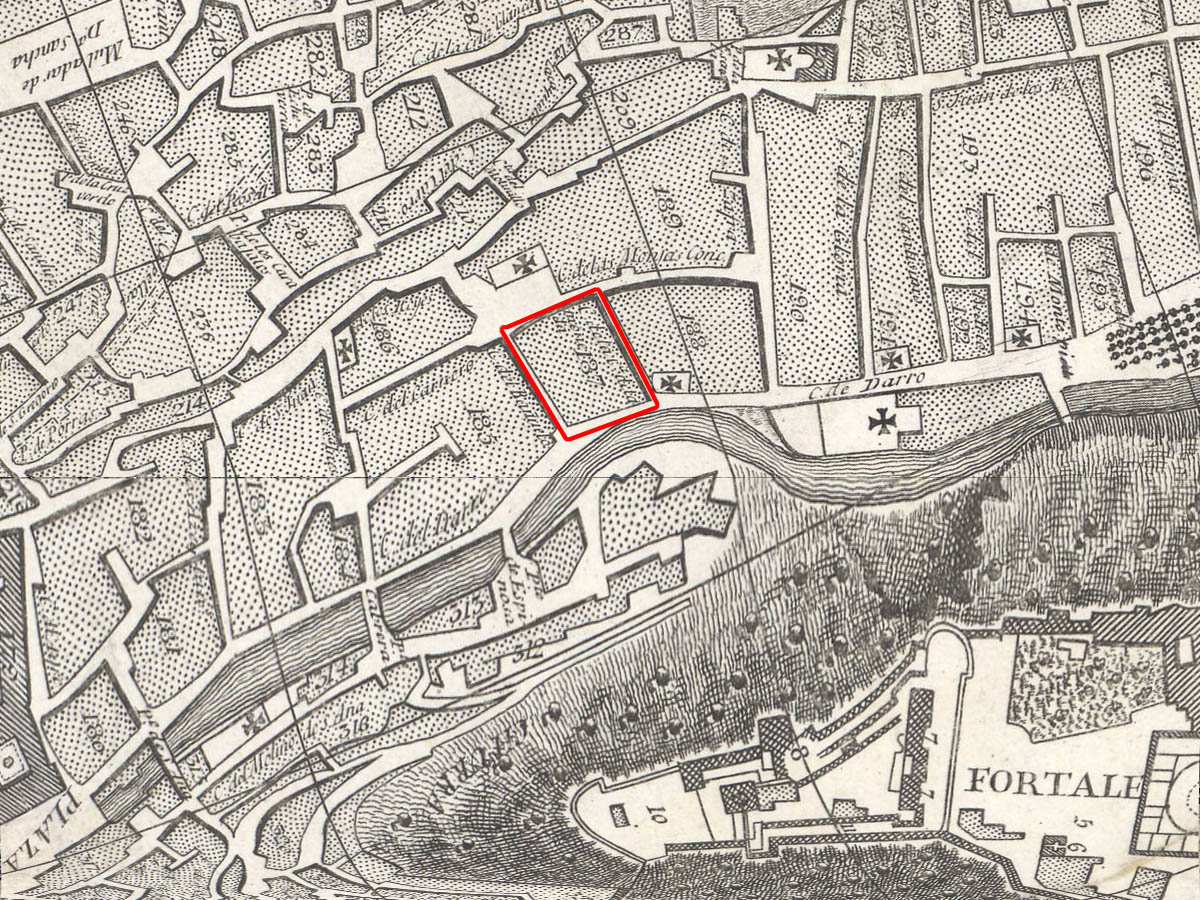
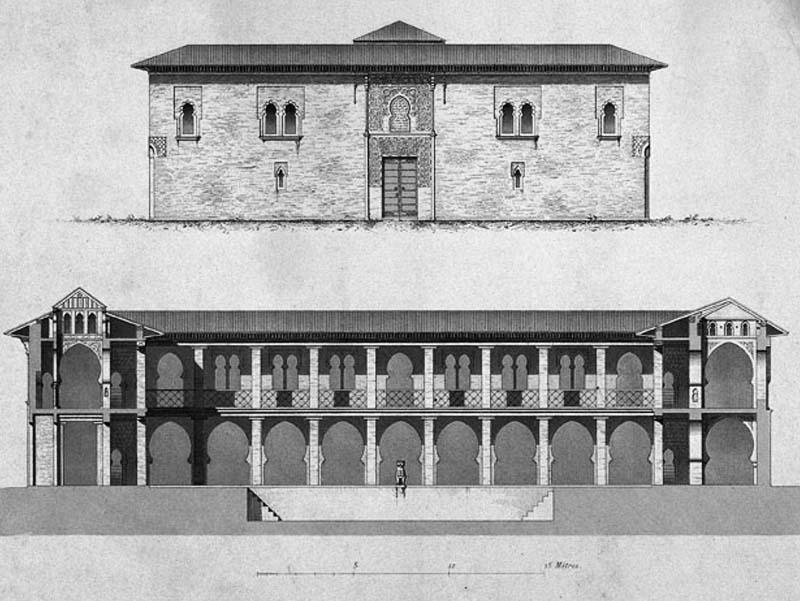
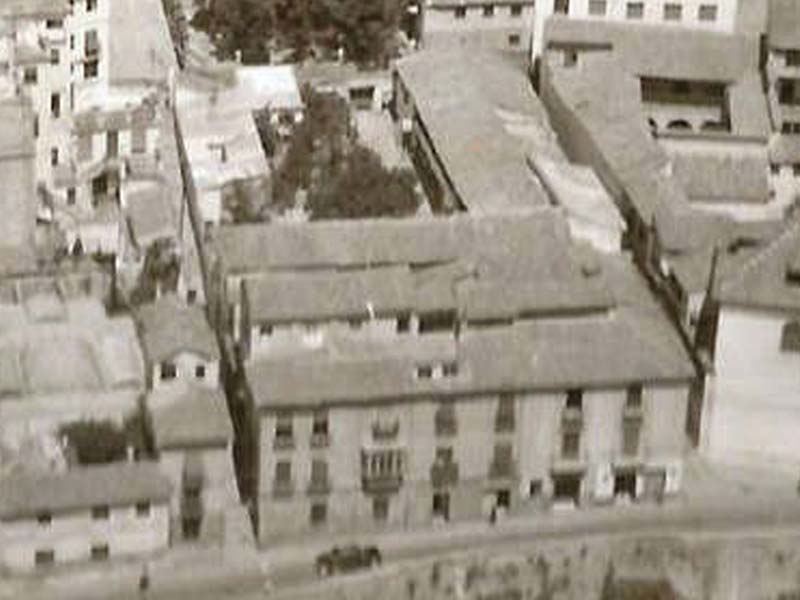
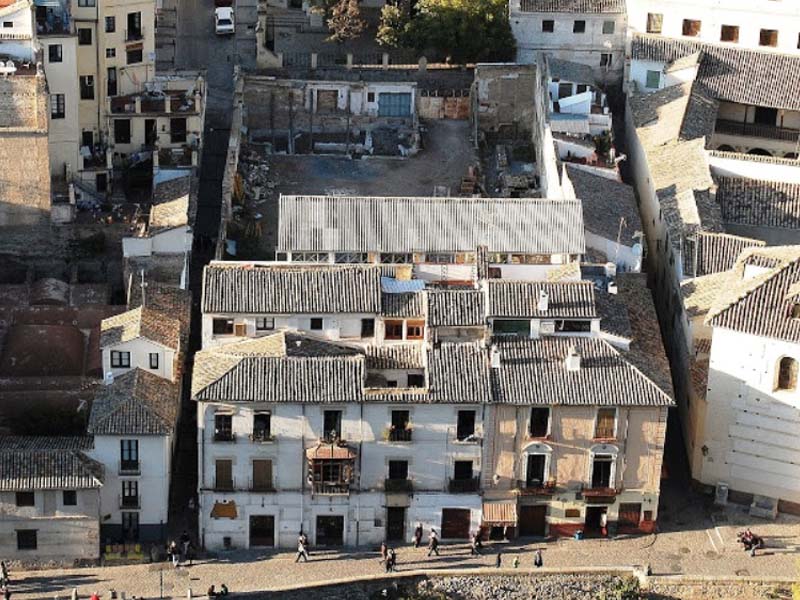
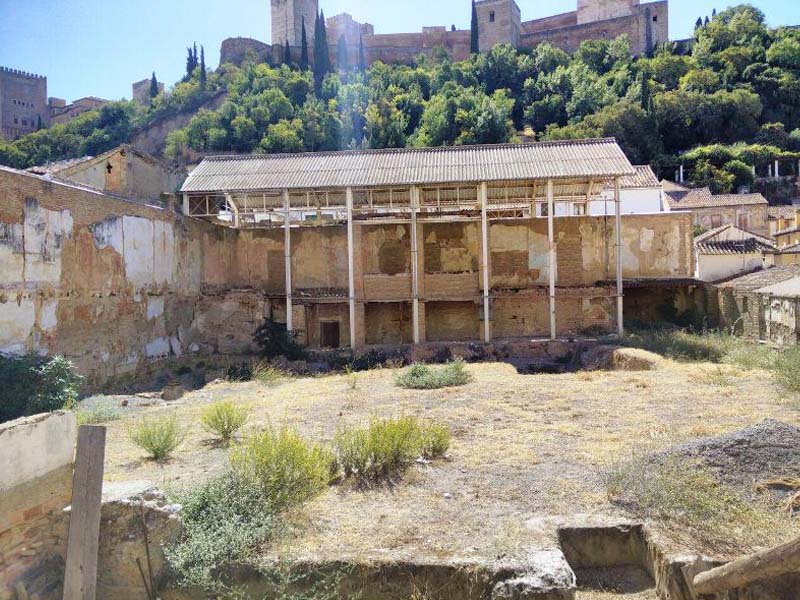
At the end of the 18th century or the beginning of the 19th century the building was converted into a neighbouring house, later it was used as a barracks and a prison. In 1843 the demolition of the building was authorized, although it could not be completed because there were parts of the construction shared with adjacent buildings on the south side. Partially demolished in 1984, it was demolished in 1997. The remains that are still preserved allow us to define the structure of Maristan as a rectangular building with four corridors arranged around a central courtyard, where a pool is located.
The Governing Council agreed on 26 March 2005 to declare the Maristan Nazari of Granada an Asset of Cultural Interest, with the category of Monument. This is one of only two buildings of this type that are preserved from the old Al-Andalus (the other is the Hospital de los Moriscos in Granada).






Source: Las casas de moneda en el Reino de Castilla (Julio Torres Lázaro)
Translation post-edited and corrected by: Jesús M. García Jiménez
Translation post-edited and corrected by: Jesús M. García Jiménez
Type of coinage
| Period | Gold | Silver | Copper | |
|---|---|---|---|---|
| Carlos II | 1665-1700 | |||
| Felipe IV | 1621-1665 | |||
| Felipe III | 1598-1621 | |||
| Felipe II | 1556-1598 | |||
| Juana - Carlos I | 1506-1555 | |||
| Fernando y Juana | 1504-1516 | |||
| Reyes Católicos | 1475-1504 | |||
Source: eNumismatic (José David Rodriguez Soage).
Mint die-sinkers and assayers
| Mark | Period | Names |
|---|---|---|
| ? | <1497 | Martín Sánchez |
| ? | >1497 | |
| Círculo | <1506 | Mice Sánchez de Betracha |
| A | >1506 | ? |
| Circulo Crucífero | >1506 | Marca de ensaye |
| Cruz | ~1506 | Marca de ensaye |
| Hoja Crucífera | ~1535 | Marca de ensaye |
| Armiño | 1535-1553 | Diego de Valladolid |
| R | <1565 | ? |
| K | <1566 | ? |
| D | <1566 | ? |
| A | >1566 | Alonso de Valladolid |
| ? | 1566 | Antón López y García de Ribas |
| ? | 1569 | Gaspar de Valladolid |
| F | 1576-1589, 1590-1597 | Francisco Téllez |
| ? | <1584 | Rodrigo de Sevilla |
| Y | ~1584 | Hierónimo Orejón de Ávila |
| M | 1597-1621 | Francisco Mínguez?, Gaspar Maldonado? |
| N | 1621, 1551-1552, 1661-1664 | Alonso Puy Nieto |
| M | 1663 | ? |
| ? | <1679 | Juan de Guzmán (solo cobre) |
| ? | 1679-1685 | Juan García Fernández (solo cobre) |
Source: Glosario de Maestros de Ceca y Ensayadores. (Josep Pellicer i Bru), 1997.
Author:
2019-02-12 .
